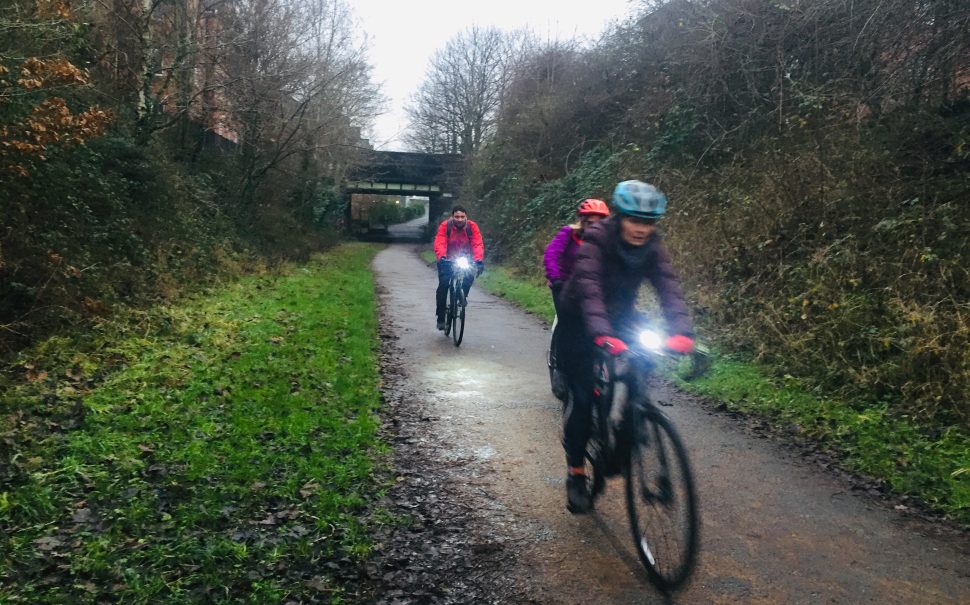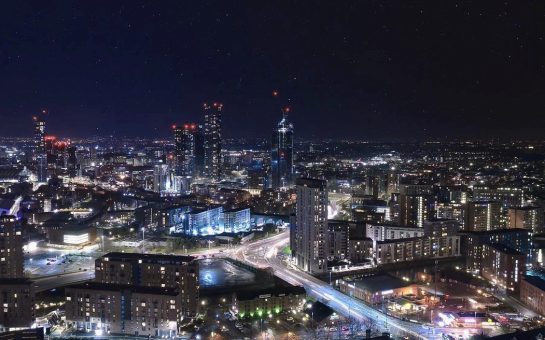A quiet revolution has been taking place in Manchester. Here, as in many other cities, the Covid-19 pandemic has unlocked a shift in the way residents and planners understand transportation. A collapse in car traffic saw an unprecedented number of mancunians get on their bike during the first lockdown.
As life returned to normal, so too did traffic, but behind the scenes Transport for Greater Manchester’s (TfGM) Active Travel team seized upon this momentum, investing millions into safer infrastructure for pedestrians and cyclists.
This effort has not gone unnoticed – Manchester has been crowned the European Capital of Cycling 2024, and has been praised for the quality of the bike infrastructure installed in recent years.
To find out how authorities are working to make Manchester a better city for cyclists and pedestrians, I spoke to Rosslyn Colderley, Director in the North for Sustrans, which works with TfGM to improve infrastructure.
“I’m probably biased,” she says, “but my perception is that things really started to take off when Andy Burnham was elected mayor.”
In Burnham’s original 2017 manifesto transport was “really just all about buses, and there was no mention of cycling and walking,” says Colderley:
“A group of organisations got together and said ‘hang on, let’s try and get influence’, and we managed to get a round table with him.”
Colderley says this group, which included Sustrans, persuaded Burnham to include walking and cycling in his manifesto, largely using research from a Sustrans report conducted with Transport for Greater Manchester.
“That report really showed that there was a public demand for more cycling,” says Colderley: “People wanted to be able to cycle themselves, and recognised the need for funding to establish safe cycle routes.
“Most interestingly, they recognised the need for space to be taken away from other road traffic to enable cycling infrastructure to be built.”
Following the mayoral election, Burnham promptly appointed former Olympic gold medal-winning cyclist Chris Boardman as Greater Manchester’s Cycling and Walking Commission.
“It was just such a fantastic move,” says Colderley: “[He] was such an incredible, positive advocate for cycling and walking, and really made things happen.”
Boardman made a point of engaging with local residents to understand where walking and cycling infrastructure would make the most difference. Colderley says that, crucially, Boardman was not afraid to be “quite challenging” to local authorities to make sure residents’ needs were heard.
“Since then, recognition of [Transport for Greater Manchester’s] Active Travel Team has really increased year on year,” she says.
“When they started they were almost working in the broom cupboard! It’s a much bigger team now, which is fantastic.”
Improving walking and cycling routes can take many forms, from protected cycle lanes to better signage. Recent work on the Fallowfield Loop – a disused railway in south Manchester, in use as a bike path since the 1970’s – included the removal of barriers and the installation of street lights.
Colderley says the improvements have led to an increase in children using the path to walk or cycle to school, and made the route more accessible for disabled people.
This consideration of a diverse range of access needs is critical ensure cycling is an option for everybody, explains Dr Graeme Sherriff, who researches transport planning at the University of Salford.
“It’s not just for disabled people,” he explained: “although that is really important for inclusion. It’s also for families, people who may be carrying children and using something like an E-cargo bike.”
“That’s why we’re so keep on opening up access to the Fallowfield Loop,” Colderley tells me.
“It’s a great route in that it’s traffic free, but one of its big drawbacks was that it was not lit at night, so we hope lighting will improve that feeling of safety.”
Both Sherriff and Colderley are particularly keen to draw attention to new CYCLOPS junctions, designed to make crossroads far safer for cyclists and pedestrians.
“What used to happen, and still does to an extent, is that the local authority would say ‘Oh yeah, we’re putting some cycle lanes in’, would paint a white line between junctions, and say ‘there you go’,” says Colderley.
“Cyclists refer to this, jokingly, as the ‘Magic White Line’ that’s meant to save them from an accident.”
Many bike journeys in Greater Manchester do still force cyclists to use traffic-heavy, dangerous roads says Victor: an Ancoats resident who makes most of his journeys by bike.
“Getting to Picadilly is a nightmare from mine,” he tells me.
“There’s a canal path until the Northern Quarter, which is lovely, but then you’ve got to cross a dual carriageway and make sense of all the car-centric one-way systems there.
“It’s stressful for me, because I feel very vulnerable compared to drivers, but I’m sure it’s annoying for them to be stuck behind me too. We just shouldn’t be using the same road.”
Both Colderley and Sherriff are hopeful that experiences like Victor’s will only become rarer in coming years, as improvements continue to be made.
“From The Walking and Cycling index, research shows that this is what the people of Greater Manchester really want,” says Colderley.
“People want to walk in cycle more. We know that and we know that they are prevented from doing so because they don’t feel safe.
“That’s why it’s so important to keep on investing in cycling and walking infrastructure, so that people feel safe to travel in the way that they actually want to.”
Featured image: wikimedia commons




